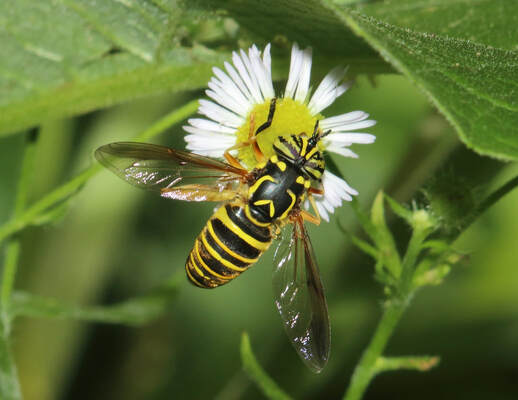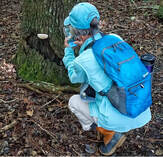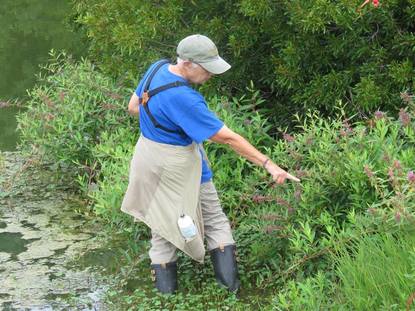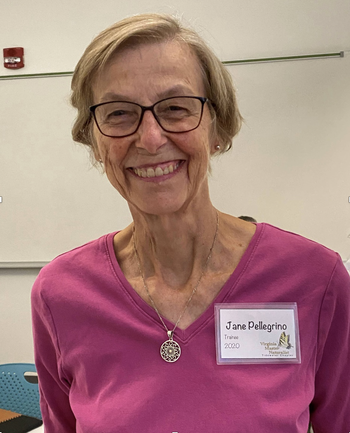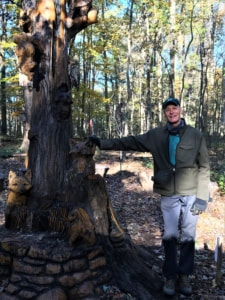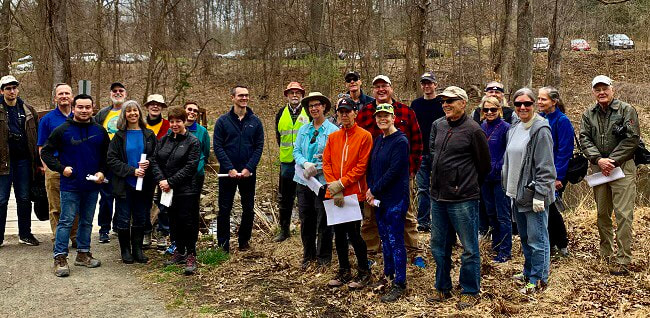New Milestone Achievements by VMN Volunteers, Winter 2022
Below, we have listed the volunteers (alphabetically, by chapter) who have achieved these milestones between August and December, 2021. The list is based on information in our Better Impact volunteer management system.
These volunteers have done extraordinary levels of service! We want to particularly acknowledge the achievements of Margaret Chatham, Gary Driscole, Judy Jones, Steven Bridges, and Alex Newhart, all new members of the VMN Golden Circle based on their contributions of more than 5,000 hours of service each!
Thank you to Tiffany Brown, VMN Program Assistant, for compiling these lists!
|
250 Hours
Bob Biersack, Alleghany Highlands Somers Knight, Alleghany Highlands Anne Doll, Arlington Regional Cynthia Ferentinos, Arlington Regional Trisha Gruesen, Arlington Regional Louise Ott, Arlington Regional Kathy Reeder, Arlington Regional Natalie Sutton, Arlington Regional Rob Garris, Central Piedmont Tim Kennell, Central Piedmont Tana Knott, Central Piedmont Harry Poulter, Central Piedmont Regina Schwabe, Central Piedmont Robert Wilkinson, Central Rappahannock Suzanne Noseworthy, Eastern Shore Sarah Glassco, Fairfax David Gorsline, Fairfax Barbara Saffir, Fairfax Megan Scott, Fairfax Mike Walker, Fairfax Cheryl Shull, Headwaters Troy Boring, High Knob Elizabeth Cooperstein, High Knob Suzanne Stern, Historic Rivers Nancy White, Historic Southside Richard Arvin, Merrimac Farm Elizabeth Black, Merrimac Farm Denise Deckert, Middle Peninsula Roger Dick, Middle Peninsula Debbie Rollins, Middle Peninsula Anne Wilber, Middle Peninsula Reinhard Beatty, New River Valley Gloria Heath, New River Valley Fred Umberger, New River Valley Arlene Crabbe-Kilduff, Northern Neck Alice Stieve, Northern Neck Tom Dreier, Old Rag Michael Ann Herbst, Old Rag Watt Hypes, Old Rag Linda Lowery, Old Rag Carolyn Strand, Old Rag Linda Boone, Peninsula Nathan Brauner, Peninsula Kathy Huston, Peninsula Linda Jenkins, Peninsula Merra Rao, Peninsula Kirsten Enzinger, Pocahontas Ernest Wilson, Pocahontas Alice Frei, Rivanna Lucy Kinsey, Rivanna Mary Klein, Rivanna Randy Smith, Riverine Nancy Armstrong, Roanoke Valley Linda Cory, Roanoke Valley Phillip Lochbrunner, Roanoke Valley Sarah Martin, Roanoke Valley Cindy Newell, Roanoke Valley Sally Noble, Roanoke Valley Tara Poelzing, Roanoke Valley Juli Bowers, Shenandoah Ellen Schwalenstocker, Shenandoah Mary Beth Yarbrough, Shenandoah Ed Coleman, Southwestern Piedmont Christy Deatherage, Southwestern Piedmont Dennis Reeves, Southwestern Piedmont Elaine Simpson, Tidewater |
500 Hours
Aileen Spurgeon, Alleghany Highlands Jo Allen, Arlington Regional Jill Barker, Arlington Regional Catherine Howell, Arlington Regional Todd Minners, Arlington Regional Leah Pellegrino, Arlington Regional Gary Shinners, Arlington Regional Ron Fandetti, Central Blue Ridge Celia Boertlein, Fairfax Ana Ka’ahanui, Fairfax Cynthia Sears-McGeehin, Fairfax Beth Walker, High Knob Joe Beene, Historic Rivers Mike Woodward, Historic Rivers Jane Baur-Constant, Historic Southside Randy Dove, Historic Southside Darrell Blankenship, Holston Rivers Carrie Holt, Holston Rivers Joan Golden, James River Carol Heiser, James River Dave Harlan, Middle Peninsula Kerry Harlan, Middle Peninsula Felicity Rask, Middle Peninsula Kat Sharp, Middle Peninsula Don Marsille, New River Valley Bill Opengari, New River Valley Mark Pierson, New River Valley Anne Clewell, Northern Neck Edward Munns, Northern Neck Audrey Vaughn, Northern Neck Bruce Bowman, Old Rag Lynne Leeper, Old Rag Christy Gardner, Peninsula Eileen Atkinson, Pocahontas Daryl Downing, Pocahontas Jerry Hancock, Pocahontas Jeanne Walter, Pocahontas Jane Erwine, Rivanna William Hamersky, Rivanna Beth Shatin, Rivanna Artie Tekel, Rivanna Sheryl Smith, Riverine Rebecca Harriett, Shenandoah Alice Fitzpatrick, Tidewater Maria Parker, Tidewater 1,000 Hours 2,500 Hours 5,000 Hours |
New Milestone Achievements by VMN Volunteers, Winter 2022 Read Post »

